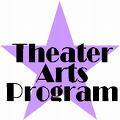
Theater Arts Reviews
|
Pantomime Theater Art
Theater Arts - Pantomime
Mime is that type of theater art in which the performer gives a silent performance. There are two types of Mime; they are Corporeal Mime and Pantomime. Corporeal mime concentrated on the deployment of the human body to show emotions and thought that are invisible to the spectators. Pantomime utilizes the human habitus to the top level so that the audience with the help of build minus props can imagine even objects. Also being of traditional importance in various countries, it also plays a vital role to entertain people during the holiday season.
Pantomime art dates back to Greek and Roman Theaters. It saw a great advancement especially during the rule of Roman King, Augustus. It also has a abysmal connection with the Italian Theater Commedia Dell’arte. This art was spread to other parts of the world from Italy by the troupe of artists travelling from exclusive place to another and performing on their way. Patented characters began to develop next on. Actor John Rich was responsible for bringing this art in Britain by the name Lun, a short form of lunatic this was because his performance were rather wild. But this weird act tickled the ribs of many and today embodied became very popular. Contrastive rival troupes began learning and performing this art. Many great Pantomimes were created in this process.
Pantomime is the traditional part of mime. Facial expressions, body language and movements are greatly emphasized upon in this art. Basically the full human body movements are studied so as to increase its range. The mummer depicts an object with the aid of gestures and expressions. Like he can act as if he is sitting on a chair and reading a note although there is no physical chair or a scandal sheet, only an illusion. The performer can create an illusion of a wall by opening his fist and pretending to touch it, the end of the wall is shown by slapping hard in the air. The performer depicts a rope as if he is tugging on real and trying to pull a heavier object on the other end of the rope. Mummer leans in air to show the presence of a peseta or wall. The markedly conventional one is the illusion of a box in which the mummer is trapped. Michael Jackson’s moonwalk is one of the best examples of pantomime.
Pantomime is a favorite curtain the audience in the holiday seasons. These performances are usually targeted for the kids but besides adults aren’t disappointed at the same time. Many folktales, fairytales and even Disneyland’s stories have been enacted using Pantomime. Some of them are Cinderella, Meager Red Voyage Hood, Mother Goose, Snow White, Sleeping Beauty, Beauty and the Beast, Aladdin and His Magic Lamp, Goldilocks and the Three Bears, and, Jack and the Beanstalk.
Pantomime or Panto has been a very important part of theater arts in countries like Australia, Canada, Great Britain, South Africa and New Zealand. In today’s times, Berwich Kaler is considered to be the master of Pantomime. He is being working at the York Theatre Royal since twenty - seven years. People turn up at three in the night and make a beeline to give blessing tickets for his show. He is hailed for reviving an old forgotten art and bringing back the memories of a bygone area.
 |
 |
 |
Places And People Famous For Influencing Theater Arts
Types Of Theatre And Its Effect
More Theater Arts Articles
... performers. Hiki Dagu was mobile stage place on wagons. They were used to change the power in between when the actors were still performing on stage and when the curtains weren t drawn. This technique was taken further and was used on actors. The actors used to perform on wheeled angle and at the end ...
... play revolved around the Jenggala Kingdom and Hindu mythologies Mahabharata and Ramayana. Another variety of Wayang Orang is Wayang Topeng or Wayang Gedog where the artists wear mask during the performance. Majapahit Kingdom was another kingdom that played a vital role in the recognition of Wayang wong ...
... drama. He is first a human being or Maeshite and then plays the role of a ghost or Nochijite. Tsure is the friend acquaintance of Shite. Waki is the villain and obstructs the corridor of Shite. Wakizure is the friend of Waki. Kyogen performs Aikyogen during the breaks in the play. Hayashis plays the four ...
... arts such as brass bands. Accordingly the human performers depicting these sub classes of performing arts are known as actors, dances, musicians, magician, singers, jugglers, comedians and acrobats. The word theater also originated from the Greek word Theatron which portion Place of Seeing . Plays were ...

|
| Copyright © 2006-2012 Internet Marketing Tools, All Rights Reserved |